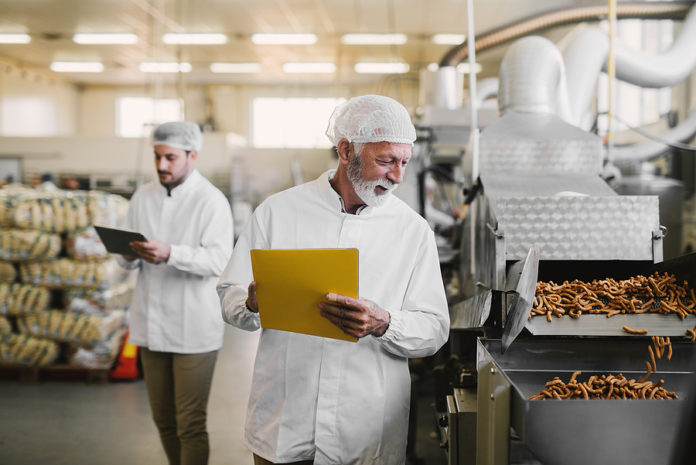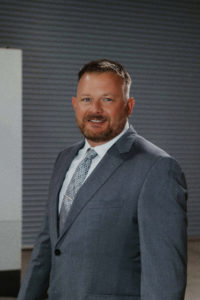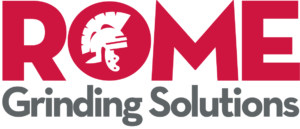
Sponsored by Rome Grinding Solutions
Keeping production lines running has always been a top goal of food processors. But the events of the past few years raised the stakes and exacerbated the challenges – costs rose, lead times increased, shipping slowed, and, in what was perhaps the biggest hit to the industry, experienced employees retired, taking their institutional knowledge with them. According to data from the Manufacturing Institute, the industry hasn’t experienced a “The Great Resignation” so much as a “Great Retirement.”
Facing challenges like these, processors are leaning even more heavily on their suppliers to help keep their equipment running and minimize production downtime. To provide this support, innovative suppliers are leveraging the power of digital technologies.
For its entire 45-year history, Rome Grinding Solutions has been laser-focused on helping customers get the most out of their equipment. The company started in 1977 doing repair and rebuilding work for rendering and grinding equipment for the food industry. They quickly realized that they could improve the design of the equipment to make it more resilient, and in 1988, they built their first grinder. Today, Rome serves their core sectors of meat, poultry, and pet food, while also offering solutions for the fruit and vegetable, ingredient, seafood, dairy, and recycling industries. With this wide range of capabilities, it’s easy to see why Rome’s motto is “Yes. We grind that.”
In keeping with its long-standing commitment to helping their customers succeed, Rome has invested in new digital technologies to mitigate the impacts of lingering supply chain disruptions as well as the ongoing labor shortage. To learn more about these technologies and the benefits they provide for customers, I spoke with Rome’s VP of Sales, Ryan Van Maasdam.
What are the biggest challenges you see processors facing right now?

Ryan Van Maasdam: The industry is dealing with two major problems. The first, and this struggle is industry-wide, is sourcing cost-effective material. Lead times continue to be longer than they were pre-pandemic, especially for stainless steel, which impacts both equipment and parts. This is made even worse by the fact that shipping is not as fast or reliable as it used to be.
The other big problem is the loss of institutional knowledge. In many facilities, this knowledge is either already gone because of retirements and employee turnover, or it’s on its way out the door.
Rome is leveraging digital technologies to help processors tackle these two problems. Let’s start with tools to facilitate replacing wearable parts.
RVM: So, like I mentioned, there have been slowdowns in shipping. “Overnight” too frequently turns into a couple of days. The worst case scenario is that a machine goes down and the customer orders a part for overnight shipping, but it takes longer than overnight, and then when it arrives it’s the wrong part.
This can happen for a couple of reasons. First, facilities often have multiple pieces of equipment, which may all be configured differently and require different parts. Second, there can be a disconnect between the maintenance technician who’s doing the work and the purchasing agent, who may not know exactly what they’re ordering – it’s easy to get the wrong line item if you’re ordering off of a spreadsheet.
Obviously, we want to make sure that our customers always get the right parts, so we introduced QR codes and digital parts lists.
We start by performing an inventory of the equipment in a plant, and then we provide QR codes for each piece of equipment. When you scan the QR code, you see an enlarged version of the equipment. You can hover over the part you need and the part number will be highlighted. This makes it easy to order exactly what you need without having to worry about different configurations or dealing with spreadsheets.
That’s great. And what about protecting against the loss of institutional knowledge?
RVM: Employee turnover in the maintenance department can be catastrophic for processors because those employees take a lot of valuable knowledge with them. To keep that knowledge from being tied to a specific employee, we’ve created multilingual instructional training videos for all of our equipment.
These training videos achieve three things:
- They provide training for new employees as well as refresher training for anyone who needs to work on equipment.
- They help ensure equipment is set up, operated, and maintained properly so the customer can get the longest life possible out of it.
- They help us troubleshoot any problems remotely so we can help the maintenance team fix issues right away without waiting for us to make a service call.
Having these videos available on-demand makes it so our customers don’t have to rely as much on employees to have institutional knowledge about how the equipment works and how to fix it. With the persistent labor shortage, our customers use these resources much more often than it would be feasible to provide in-person training.
What are the main benefits your customers are seeing from using these technologies?
RVM: Downtime is very expensive for processors. We invested in these technologies to shorten the time between when a problem arises and when it gets solved. They save our customers time and money by minimizing downtime in the short term and increasing the equipment lifespan over the long term.
These technologies have ancillary benefits as well – for example, helping our customers better understand the equipment and reducing or eliminating travel time and expenses for service calls.
At Rome, we operate a very face-to-face business. I think you’d be hard-pressed to find another company that’s in front of our customers as often as we are. Unfortunately with the pandemic, we couldn’t do that, so investing in these technologies is what we could do to help from afar.
Even now that the pandemic is no longer disrupting business to the same extent, these technologies provide ongoing value for our customers. On the whole, our goal is to be the industry go-to for grinder equipment, and that includes doing whatever we can to make sure our customers succeed.
You’re also using augmented and virtual reality. Can you tell our readers a little more about that?
RVM: Yes, we use augmented reality (AR) and virtual reality (VR) for our new equipment, to help customers visualize our equipment in their facility.
We started this pre-pandemic with the Microsoft HoloLens. Using the headset, you can visualize a whole grind line at actual size. You can walk around and explore the equipment, and you can also see how it would look in your facility. For example, if you need to make sure a forklift can move through a space, you can visualize exactly how big that space will be to make sure you have the necessary clearance. Alternatively, I can come into your office and shrink an entire 100-foot grind line down to the size of your desk.
These types of technologies are invaluable for helping processors make the right equipment decisions.
To wrap up, what’s the most important thing processors can do to be prepared for 2023?
RVM: Keep an inventory of your day-to-day wearable parts, and, if there’s something you need, order it now. Don’t wait until your equipment goes down – the sooner you order it, the sooner you’ll get it!
Excellent advice! Thank you, Ryan.
To learn more about the many ways the Rome team can support your food processing business, visit Rome Grinding Solutions.





![[Webinar] Chaos into Clarity: Future Proofing Your Food & Beverage Company with ERP](https://foodindustryexecutive.com/wp-content/uploads/2024/07/Aptean-Chaos-into-Clarity-Future-Proofing-Your-Food-Beverage-Company-with-ERP-218x150.png)


